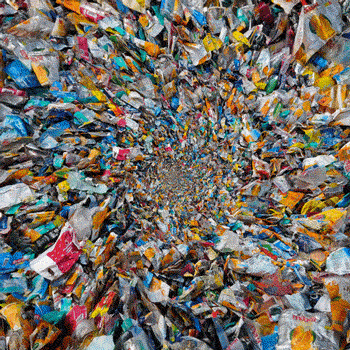

EPACHA.org

Environmental Protection Alliance and Center for Humanitarian Affairs Foundation
"REBUILDING OUR WORLD BLOCK-BY-BLOCK"
T h e P o r t a l s o f E P A C H A F o u n d a t i o n – P h a s e I I a r e O p e n :

EPACHA Foundation Proudly
Celebrates Our Life-Sustaining Environment!
World Environment Day
June 5, 2025

Courtesy, Wikimedia Commons
Parc Tête d'Or l'Espace droits de l'homme.jpg

The World Must Never Forget
that there is . . .

"There is no Plan B . . .
because there is no Planet B."

Quote Courtesy, Ban Ki-moon - 8th UN Secretary-General
What is World Environment Day?
“Only One Earth” was the slogan for the first United Nations Conference on the Human Environment, held in Stockholm
in 1972. This put sustainable development
on the global agenda and led to
the establishment of World Environment Day.
Led by the United Nations Environment Programme (UNEP) and held annually on 5 June since 1973, World Environment Day is the largest global platform for environmental public outreach and is celebrated by millions of people across the world.
Courtesy, United Nations
-
UN Secretary-General's Message
June 5, 2025
BEAT PLASTIC POLLUTION!



"Plastic pollution is choking our planet (...) Yet there
is a movement for urgent change. In two months,
countries will come together to hammer-out a
new global treaty to end plastic
pollution. (...) I urge negotiators to return to talks in
August determined to build a common path through their differences and deliver the treaty our world needs."
Quote Courtesy, UN Secretary-General António Guterres
Courtesy, United Nations
This World Environment Day focuses on solutions to beat plastic pollution. And rightly so.
Plastic pollution is choking our planet – harming ecosystems, well-being, and the climate.
Plastic waste clogs rivers, pollutes the ocean, and endangers wildlife.
And as it breaks-down into smaller and smaller parts, it infiltrates every corner of Earth: from the top of Mount Everest, to the depths of the ocean; from human brains; to human breastmilk.
Yet there is a movement for urgent change. We are seeing mounting public engagement… Steps towards reusability and greater accountability… And policies to reduce single-use plastics and improve waste management.
But we must go further, faster. In two months, countries will come together to hammer-out a new global treaty to end plastic pollution.
We need an ambitious, credible and just agreement this year. One that covers the life-cycle of plastic, through the perspective of circular economies… That responds to the needs of communities… That aligns with broader environmental goals, the sustainable development goals, and beyond… And that is implemented fast and in full.
I urge negotiators to return to talks in August determined to build a common path through their differences and deliver the treaty our world needs.
Together, let’s end the scourge of plastic pollution and build a better future for us all. Thank you.
Text Courtesy, UN Secretary-General António Guterres
-
LEARN MORE ABOUT. . .
WORLD ENVIRONMENT DAY
ON THE FOLLOWING WEB PAGES:



-
Video Courtesy, United Nations - Climate change
YES!
The WORLD is facing a
"GREEN CRISIS!"
ALL of HUMANITY CAN HELP REVIVE
OUR LAND. OUR FUTURE.
"HUMANITY, OUR LAND & OUR FUTURE MUST SURVIVE!"
- EPACHA Foundation -
-
EPACHA Foundation Proudly
Celebrates Our Life-Sustaining Environment!
World Environment Day
June 5, 2023 THEME:



"SOLUTIONS TO PLASTIC POLLUTION"
WE HAVE THE SCIENCE;
WE HAVE THE PEOPLE
TO...
"BEAT PLASTICS TOGETHER!"
Video Courtesy, United Nations - UN Environment Programme
#beatplasticpollution together this World Environment Day 2023
Courtesy, United Nations - UNEP

-




LEARN MORE ABOUT. . .
WORLD ENVIRONMENT DAY
AND THE WORK OF
UNEP

-




What kind of Environment
Do We All Want?!
Blue Sky . . . Clean Air!

Courtesy, National Geographic - Timothy G. Laman - Rain Forests, Incubators of Life
Clean, Green . . . Planet!

Courtesy, National Geographic - Michael Nichols - Rain Forest
Clean Water . . . a Healthy,

Courtesy, National Geographic - Flip Nicklin/Minden Pictures - Humpback Whale Massaxchuasetts
Sustainable Future . . .

for "All of Humanity!"

Courtesy, Wikimedia Commons, Kasai Rinkai Park in Edogawa, Tokyo, Japan. The park includes
an aquarium and a bird sanctuary - Photographer, Masahiro Hayata from Tokyo, Japan



Q U E S T I O N ?
Are you doing your part
to preserve and
conserve our
Environment: Humanity's
Life-Sustaining Habitat?!

Learn more about the
United Nations Environment Programme
on the following web page:

H A P P Y
World Environment Day!




-
-
If you’ve missed the work of EPACHA in its Phase I duration, please be encouraged to click on the below web links.
Sincerest Thanks are Extended to http://archive.org/web/ for having made possible an archived viewing of
EPACHA Foundation’s entire volume of its Phase I web pages:

https://web.archive.org/web/20180321225044/http://www.epacha.org/Pages/Home_Page_BkUp3.aspx
Complete List of EPACHA - Phase I web pages:
J U N E 2 0 1 8 - U P D A T E D - J U N E 2 0 2 5
-










